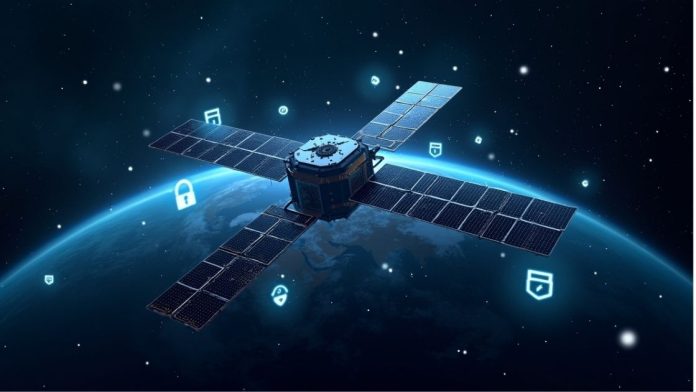Satellites are critical to modern life, powering everything from GPS navigation and weather forecasting to global communications and national defense. Yet, as their importance grows, so does the threat landscape. Cyberattacks targeting satellites are no longer the realm of science fiction. They are a real and rising concern.Cybersecurity for satellites is not optional, it’s mission-critical.
This article dives deep into the key challenges, vulnerabilities, and defense strategies associated with satellite cybersecurity.
Why Satellite Cyber Security Matters More Than Ever
Satellites play a silent but essential role in our daily lives and global infrastructure:
- Global navigation and communication
- Military surveillance and intelligence
- Financial systems (timing services for transactions)
- Disaster monitoring and climate research
A successful cyberattack on any of these assets could cause:
- Communication blackouts
- Navigation errors
- Data breaches
- National security threats
What Makes Satellites Vulnerable to Cyberattacks?
Unlike ground-based systems, satellites face unique challenges:
1. Long Lifecycle, Outdated Software
Satellites are often designed to function for 10–20 years. However, software updates in space are difficult, and many older satellites run on legacy systems that were never designed with cybersecurity in mind.
2. Limited Physical Access
Once launched, there’s no way to physically “patch” a satellite. Cybersecurity updates must be done remotely and that’s risky if the communication channel itself is compromised.
3. Unprotected Communication Channels
Satellites rely on uplink and downlink signals to communicate with ground stations. If these signals are not encrypted or authenticated, they can be intercepted, spoofed, or jammed by attackers.
4. Complex Supply Chain
From hardware manufacturers to software vendors, the satellite ecosystem involves multiple parties. A single compromised component or vendor could introduce a backdoor for malicious actors.
Common Cyber Threats Facing Satellites
Hackers and state actors have multiple entry points into satellite systems. These threats include:
1. Signal Interception and Spoofing
Cybercriminals can hijack satellite signals to:
- Eavesdrop on sensitive communications
- Send false GPS coordinates (spoofing)
- Disrupt military or commercial operations
2. Ground Station Vulnerabilities
Satellites are controlled via ground stations, which are often internet-connected. If these systems lack strong security protocols, hackers can:
- Gain control of satellites
- Corrupt software updates
- Disrupt mission-critical commands
3. Supply Chain Attacks
Hardware and software used in satellite construction can be compromised long before launch. Malicious code or vulnerabilities embedded during development can later be exploited in orbit.
4. Jamming Attacks
Adversaries can use powerful transmitters to jam satellite signals, preventing communication. While not a traditional “cyber” method, jamming is increasingly paired with digital attacks for a two-pronged offensive.
Real-World Satellite Cyber Threats
- 2007–2008: NASA’s Landsat and Terra AM-1 satellites were reportedly accessed by hackers through a ground station in Norway. Though no damage was done, it proved how easily satellites could be infiltrated.
- 2022: KA-SAT Attack During Ukraine Invasion Russian-linked hackers targeted Viasat’s KA-SAT network, disrupting satellite internet for thousands across Europe. The attack coincided with the start of military operations in Ukraine, underscoring how satellites are critical in modern warfare.
- GPS Spoofing in the Middle East and Asia Multiple commercial vessels and aircraft have reported altered GPS data pointing to advanced spoofing attacks potentially orchestrated by state-level actors.
Core Pillars of Satellite Cybersecurity
To protect satellites from these evolving threats, organizations must focus on:
1. Secure-by-Design Engineering
Cybersecurity must be embedded into the satellite design process—not bolted on later. This includes secure firmware, hardened software stacks, and fail-safe mechanisms that can isolate compromised systems.
2. Encrypted and Authenticated Communications
All uplink and downlink signals should use strong encryption and multi-factor authentication. Quantum-safe cryptography is emerging as a promising path to future-proof against evolving threats.
3. Red-Teaming and Penetration Testing
Just like with traditional IT infrastructure, satellites should undergo ethical hacking and penetration testing. This simulates real-world attacks and uncovers vulnerabilities before adversaries can exploit them.
4. Ground Station Security
Hackers often target satellite ground stations—these act as the digital “doors” to space. Securing physical access, network connections, and employee credentials is just as critical as protecting the satellite itself.
5. AI-Powered Threat Detection
Advanced AI/ML systems can monitor telemetry data, detect anomalies in command sequences, and flag suspicious patterns that may indicate an attack in progress.
The Role of International Cooperation and Policy
Cybersecurity for satellites is not just a technical challenge, it’s a geopolitical one.
Organizations like NATO, the European Space Agency (ESA), and the United Nations Office for Outer Space Affairs (UNOOSA) are working on frameworks for space cybersecurity. However, international law still lags behind the technology.
Establishing global norms for space conduct and mandatory cybersecurity standards for commercial satellite providers is critical to prevent a “Wild West” in orbit.
Career Opportunities in Satellite Cybersecurity
As demand surges, so do career opportunities. Roles include:
- Satellite Security Architect
- Ground Station Security Analyst
- Space Systems Penetration Tester
- Cyber Threat Intelligence Analyst (Space Operations)
Most positions require a blend of cybersecurity certifications (e.g., CISSP, CEH) and knowledge of aerospace engineering, radio frequency (RF) communications, and embedded systems.
Final Thoughts
Cybersecurity for satellites is no longer just a technical challenge, it’s a matter of national and global security. As space becomes more commercialized and interconnected, safeguarding our space assets from cyber threats is crucial.
Whether you’re a policymaker, satellite manufacturer, tech entrepreneur, or curious reader, staying informed and proactive is essential. The cost of inaction is simply too high.

